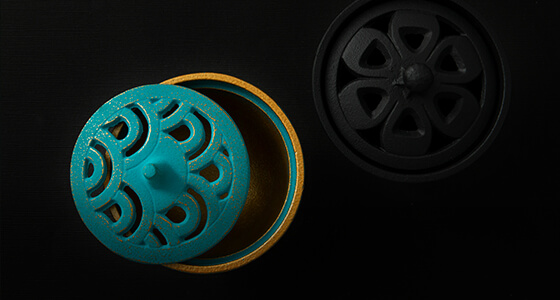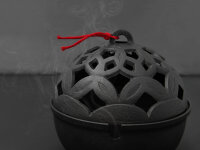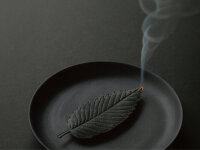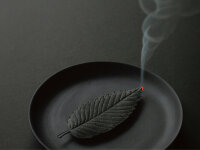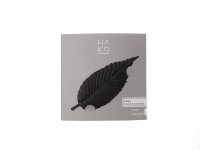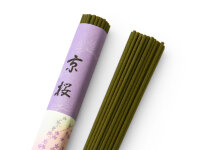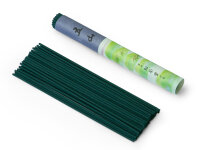
Japanese Incense
Incense from Japan
Japan is a true master in the production of exquisite incense. Like many other things, incense was once adopted from China and gradually perfected in the country. Today, you can obtain incense sticks and incense blends of the purest frankincense to the finest aromatic woods in unique quality from Japan's incense workshops.
Nature & Tradition of Japanese Incense
The practice of incense burning, known as "Koh," began in Japan in the 6th century, coinciding with the introduction of Buddhism from China. Initially, incense materials were used primarily in religious ceremonies known as "Sonae-Koh." Over time, the versatility of incense in Japan became better understood, and incense burning for pleasure began. This form is called "Sorodaki," which can be loosely translated as "empty" or "without a specific purpose." Similar to the Cha-Do ceremony (Cha-Do = "Way of Tea"), the Kho-Do ceremony also requires years of training and practice until every single movement can be performed with perfect precision without conscious thought. Through this evolution, a meditative experience is created in which the Kho-Do master leads the ceremony, passing the incense cup to the guests for them to enjoy, recognize, and identify the scents.
What Is Used for Incense in Japan? Scent Mixtures and Japanese Incense Sticks
The choice of incense is based on fragrance and effects. Common incense materials found in Japanese scent mixtures include agarwood, sandalwood, cinnamon, cloves, camphor, ginger, and amber. Similar to the mindfulness of the effects of different types of tea, incense materials are chosen to calm the mind and enhance concentration. Therefore, the scents in incense sticks used for meditation tend to be robust and spicy. The ingredients in Japanese incense sticks, from herbs and woods to aromatic resins like benzoin, are of the highest quality.
The Tradition of Incense - A Integral Part of Japanese Culture
In Japan, incense is burned on various occasions, including during tea ceremonies, in honor of ancestors, at religious ceremonies, during meditation, or simply for enjoyment and relaxation. Granule mixtures used in Buddhist temples for purification rituals and meditation are called "Shoko." The granules contained in them include ingredients such as Jinkoh, sandalwood, cloves, or ginger lily.
In the "Soradaki" incense method, fine incense materials are placed next to a glowing piece of charcoal in an incense burner, slowly allowing the fragrances to be released over time. This method of incense burning is well-suited for small spaces and is often used purely for pleasure.
The History of the Famous Shoyeido Incense
In the early 18th century, Rokubei Moritsune Hata learned new incense techniques at the Imperial Palace and offered them to people beyond the imperial court. Twelve generations later, the Hata family continues to create an astonishing range of fragrances, including the Shoyeido incense, regarded as the highest quality and most natural incense on Earth. The art of fragrance developed at Shoyeido extends beyond incense to include a wide variety of incense mixtures made from hand-selected, natural ingredients, handmade incense sticks, and other unique creations designed to create a relaxed atmosphere.
Japanese Incense Sticks by Shoyeido
In Japan, there are eight traditional fragrances known as Daigen-koh, Gozan, Haku-un, Hoyei-koh, kin-kaku, Kyo.nishiki, Kyo-zakura, and Nokiba. Shoyeido has produced incense sticks for these fragrances according to ancient, traditional recipes. The noble natural ingredients, including herbs, resins, woods, barks, and roots, bring harmony and well-being into our lives in their purest form. The naturalness of all ingredients determines the quality. In incense sticks, a powdered natural binder from the cypress tree is used. No artificial flavors, synthetic oils, or animal substances are used. This results in an exquisite incense for the full enjoyment of incense burning.


